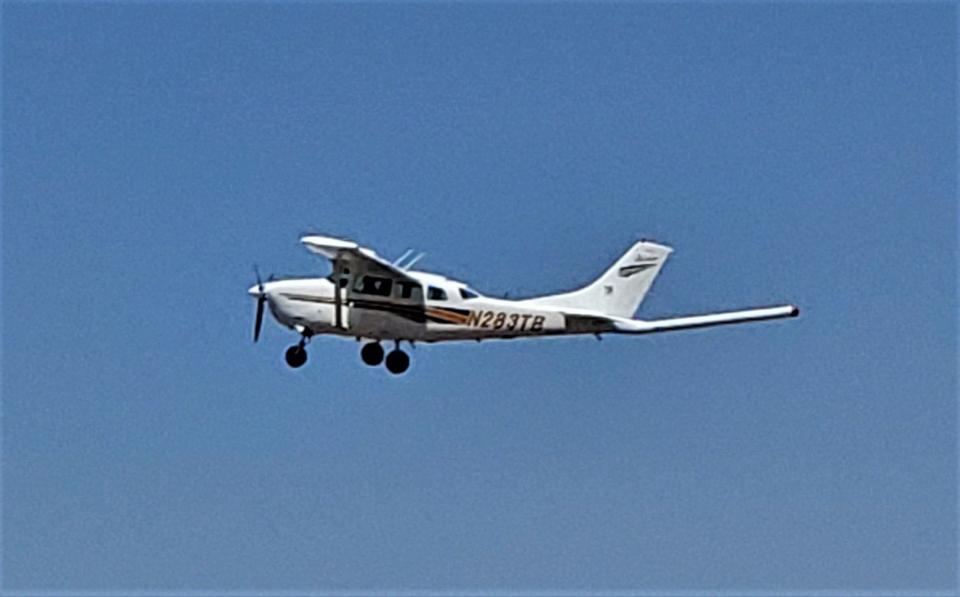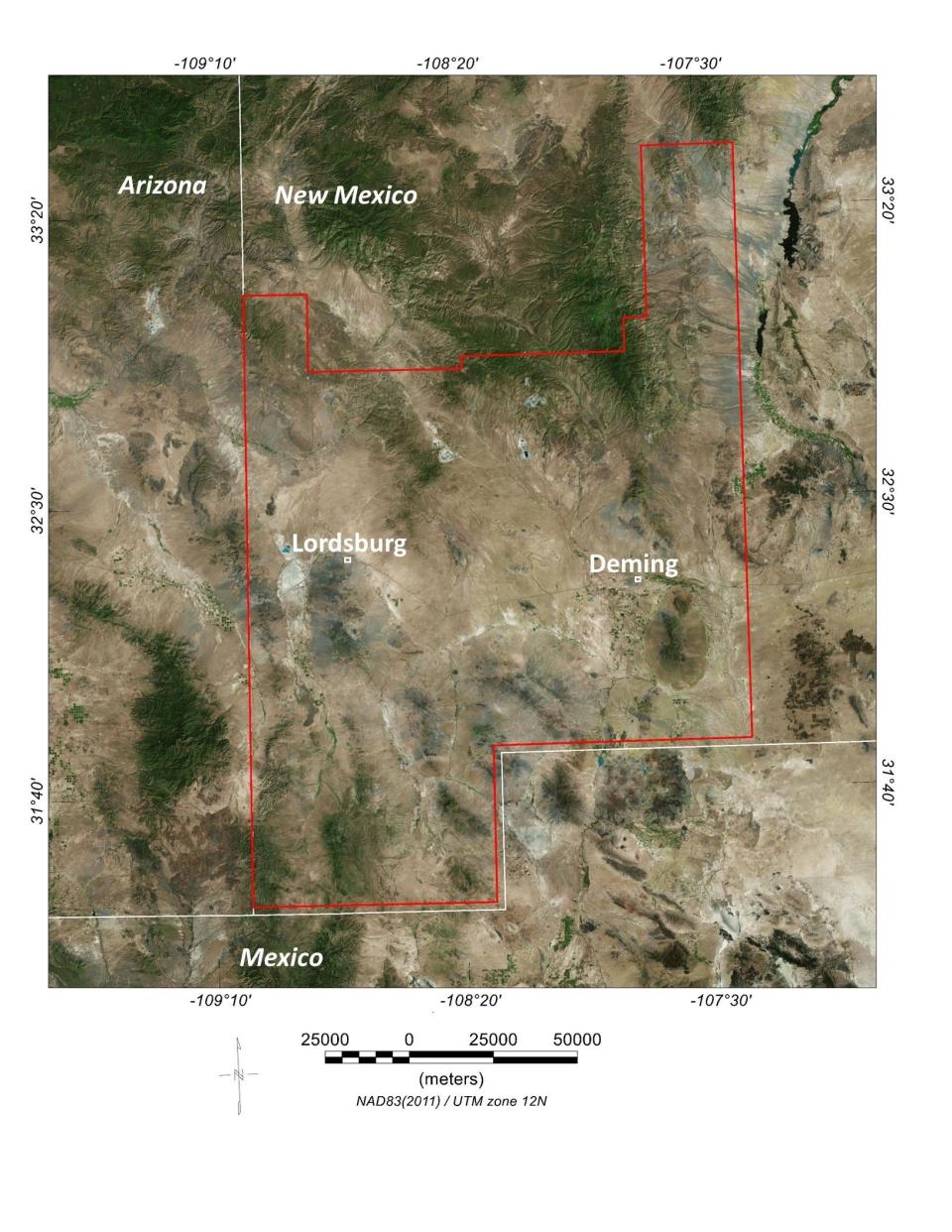Scientists searching the deserts of New Mexico for minerals critical to energy, technology
Gold, copper, lithium and myriad other minerals could lay deep underground in the deserts of southern New Mexico, but could be found by scientists taking to the sky.
The U.S. Geological Survey (USGS) announced beginning in April it would search for evidence of 23 minerals via aircraft over the Deming and Lordsburg areas in New Mexico’s southwest bootheel region.
The study was expected to last about eight months.

More: Solar energy tax credits reach $12M cap in New Mexico as industry set for growth
Instruments aboard will measure the Earth’s magnetic fields and natural, low-level radiation from different rock types, allowing researchers to develop underground maps.
The USGS partnered with the New Mexico Bureau of Geology and Mineral Resources to use airborne geophysical technology within the USGS’s Earth Mapping Resource Initiative (EARTH MRI) project.
It’s a joint venture between the USGS and the Association of American State Geologists, along with state, federal and private organizations, read the announcement, intended to research geology and mineral resources in the region.
More: Renewable energy now required on New Mexico state land after Lujan Grisham signs bill
The survey, intended to cover 10,000 square miles in New Mexico, is part of a national-effort to generate three-dimensional maps of underground geology up to 1 kilometer beneath the surface.
That will help improve scientific understanding of groundwater distribution, mineral and energy resources and risks of natural disasters like earthquakes.
The plane will fly along a pre-determined path about 120 meters in the air, increasing to 150 meters in heavily populated areas and 200 meters in mountainous regions, and maintaining a 2.5-kilometer distance from the U.S.-Mexico border so as not to cross the boundary when turning.
More: Oilfield lawmakers claim success in killing bills aimed at energy pollution in New Mexico
New Mexico State Geologist Nelia Dunbar, also director of the New Mexico Bureau of Geology and Mineral Resources, said the data will prove useful to the bureau as it studies the geological makeup of New Mexico.
“The airborne geophysical imaging that is being collected by the USGS will be of tremendous value to scientists at the New Mexico Bureau of Geology and Mineral Resources, industry and the general public and we eagerly await the survey data,” Dunbar said.

Virginia McLemore, principal senior economic geologist at the Bureau said the mapping will aid ongoing state-level research.
More: Solar energy proposals concentrated in southern New Mexico. Program starts this spring
“Our surface mapping investigations will be strengthened by the insights into the subsurface geology provided by the airborne magnetic surveys and our geochemical analyses of rock samples will be complemented by the aero-radiometric surveys, which will provide a wealth of information about the surface geochemistry,” McLemore said.
Funding for the program came via $3.4 million in federal funds allocated through the Infrastructure Investment and Jobs Act, a signature piece of legislation signed by President Joe Biden in 2021.
“Investments from President Biden’s Bipartisan Infrastructure Law will make a significance difference in New Mexico and across the nation as we map valuable geology and critical mineral resources,” said Assistant Secretary for Water and Science Tanya Trujillo.
“This critical partnership with the State of New Mexico shows how these resources can enable us to work together to strengthen key domestic supply chains by helping secure a reliable and sustainable supply of critical minerals.”
More: New Mexico wind power line has $20.5B in benefits, study says, despite wildlife concerns
Nationwide, the infrastructure bill invested $510.7 million in the program.
The maps will help the U.S. locate minerals critical to a multitude of products targeted by the federal government to decrease pollution, like modernized household appliances, electric vehicles, batters, wind turbines and solar panels.
They will also help develop infrastructure projects, groundwater planning and energy production, read the announcement.
More: Republican-backed oil and gas bill opposed by New Mexico Democrats in Congress
USGS Scientist Mark Bultman said a region including New Mexico, Arizona, Texas and northwestern Mexico was one of the world’s greatest resources for copper, molybdenum and other minerals used in industrial metals.
“The USGS Earth MRI airborne magnetic/radiometric survey will contribute to the geologic understanding of both the mountain ranges and basins and make a major contribution to the understanding of the mineral endowment of the region,” Bultman said.
Similar flyover research via helicopter was also announced last month in northern Nevada and southeastern Oregon, running from March to April.
More: Lujan Grisham signs burn ban bill into law to prevent future wildfires in New Mexico
In total, the USGS reported it identified more than 800 focus areas throughout the country for the 23 mineral systems it targeted through the program, including Alaska, Hawaii and Puerto Rico.
“These areas can be used to guide future efforts to collect new geologic, geophysical, geochemical, and topographic data that focus on critical minerals through Earth MRI,” read a February USGS report.
“All of these focus areas are serving as an initial broad screening tool for targeting areas for new geologic, geochemical, topographic, and geophysical mapping and data acquisition through Earth MRI.”
Adrian Hedden can be reached at 575-628-5516, achedden@currentargus.com or @AdrianHedden on Twitter.
This article originally appeared on Carlsbad Current-Argus: Aircraft study searching for minerals in southern New Mexico deserts

